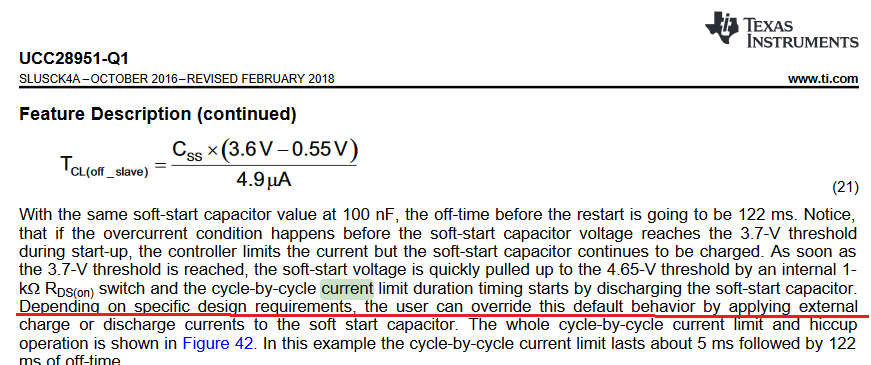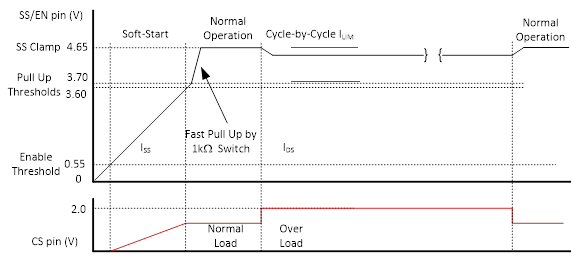Other Parts Discussed in Thread: PMP
Hello experts, I have a few issues in my mind about current limiting function of UCC28951-Q1
Our device, which we designed as 30V 35A (max), behaves strangely when its overloaded.
For example
- 35A flows nicely when we connect 0.85R load bank to 30V.
- When we load 0.75R to 30V, the voltage drops directly to 0V, and it acts as if it gets close to 30V again and drops back to 0V, repeating this process constantly It does the same thing when we connect 0.60R load bank to the output , Is this behavior expected or what is the solution?
- When we load 0.75R to 30V, shouldn't it steadily reduce the output voltage to 28.5V to limit the current? same thing when I connect a 0.60R load, shouldn't it reduce the output voltage stably to 25V?
Where exactly do you think the problem is? I would be very happy if you could help me.
Thanks in advance,
Mikail Ünal





